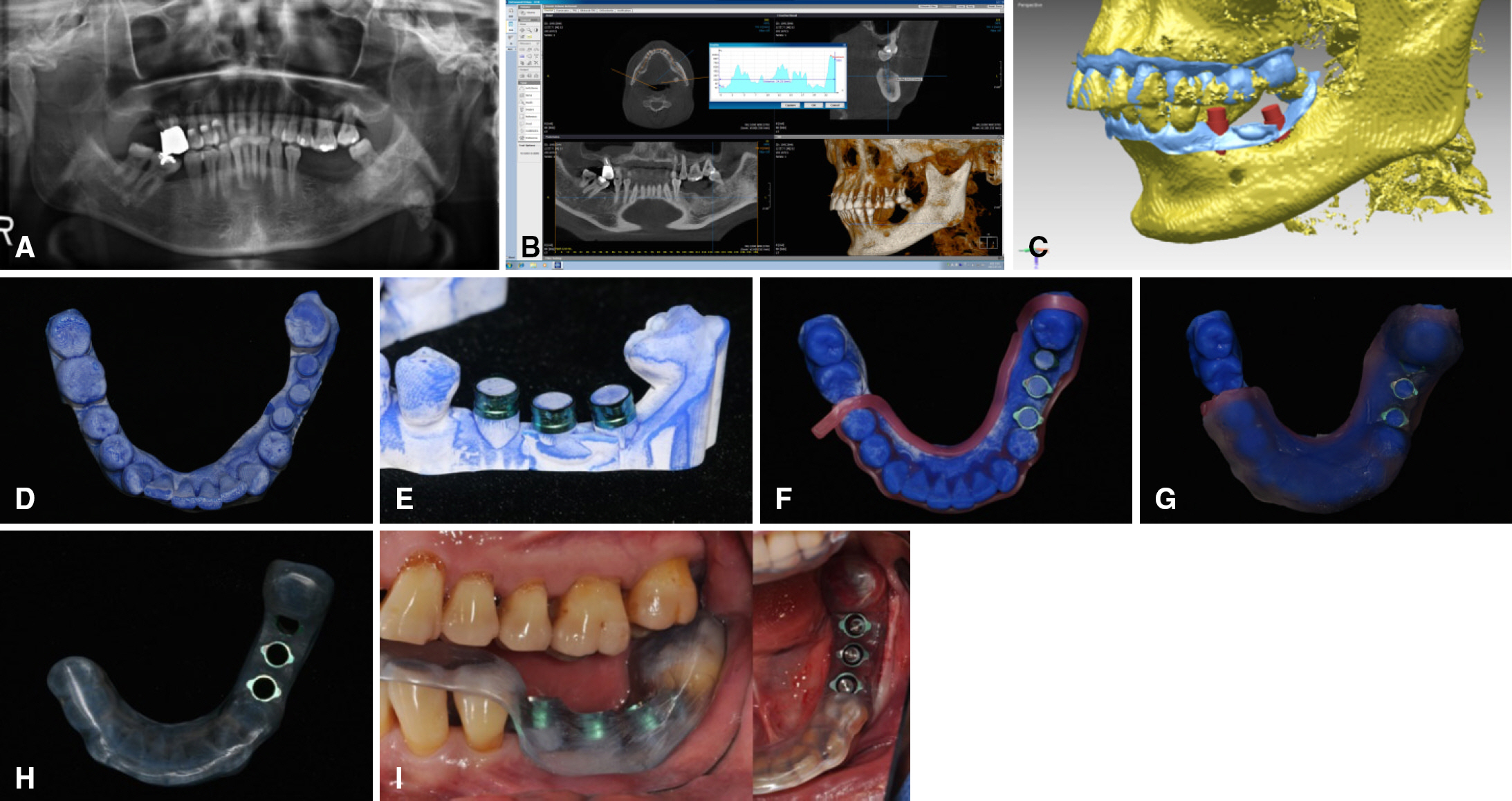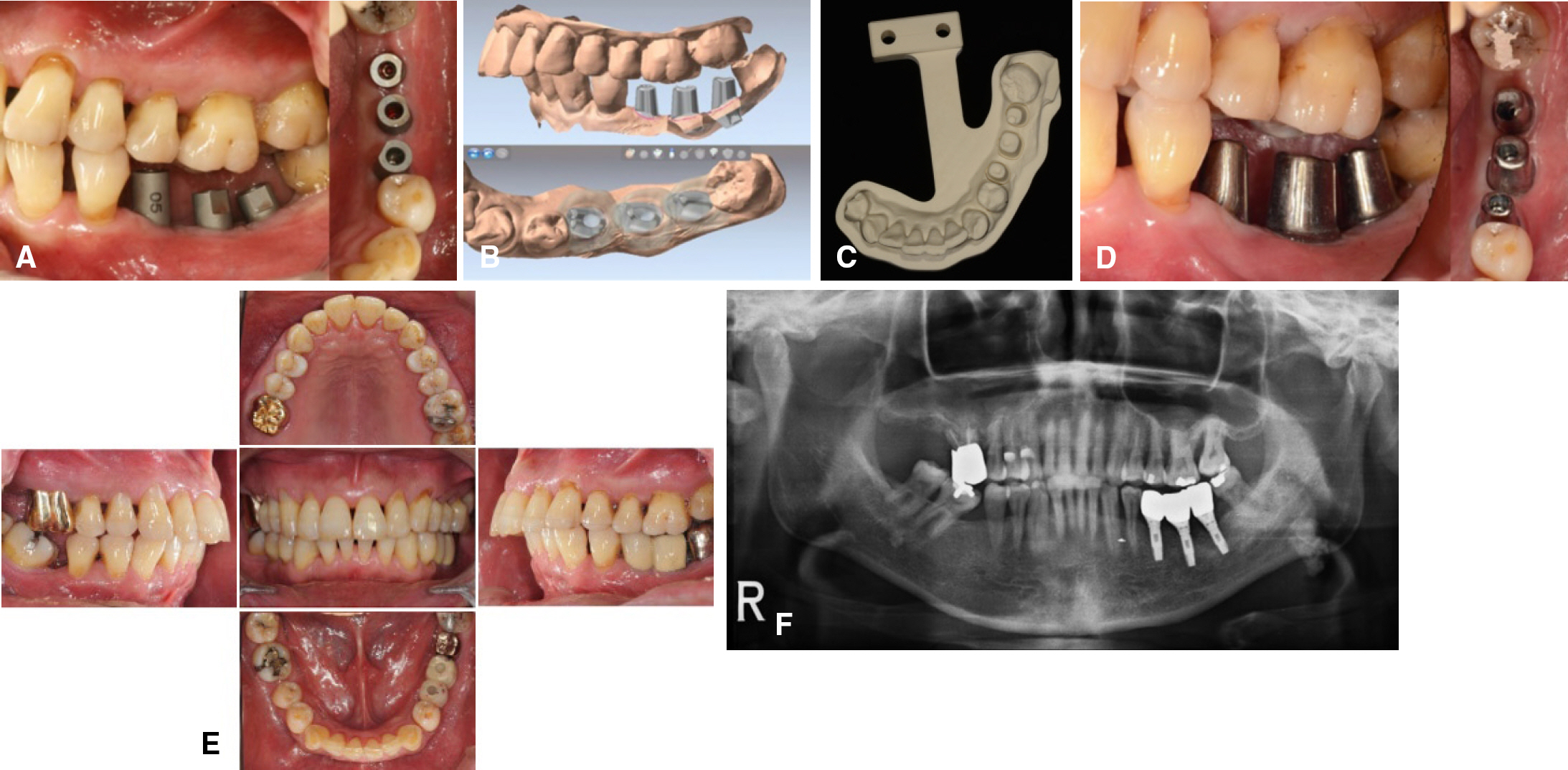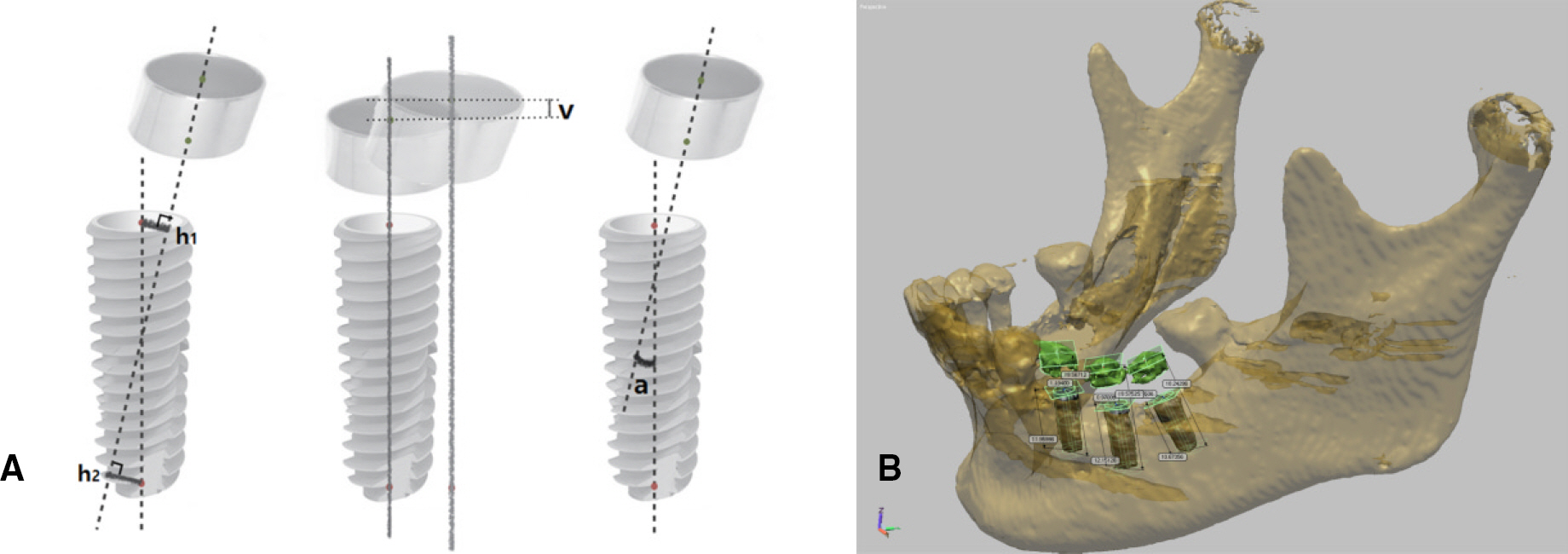J Korean Acad Prosthodont.
2015 Jul;53(3):244-249. 10.4047/jkap.2015.53.3.244.
A case report of a surgical guide fabricated via intraoral scanning-based implant planning and wax-based rapid prototyping
- Affiliations
-
- 1Department of Prosthodontics, School of Medicine, Ewha Womans University, Seoul, Republic of Korea.
- 2Department of Prosthodontics and Dental Research Institute, Seoul National University Gwanak Dental Hospital, Seoul, Republic of Korea. jimarn@gmail.com
- KMID: 2195255
- DOI: http://doi.org/10.4047/jkap.2015.53.3.244
Abstract
- With the recent progress of digital technology, the computer guided surgery utilizing a guide template in the placement of implant has been actively performed, and the method employing the intraoral scanner at the implant prosthesis introduced. Fabrication method of the guide template can be largely classified into design-related rapid prototyping (RP) system and vector milling system, and each of the method has its own weakness in the clinical application despite of excellent accuracy. Thus, in this case study, a working model was fabricated by the wax RP technology using images acquired by CBCT and an intraoral scanner, and the metal bushing was picked up with orthodontic resin cast upon the wax model. Using this method, a surgical guide template was fabricated and used in surgery. From this, we could obtain a satisfactory outcome clinically in the implant placement and the fabrication of the final prostheses and thus report this case herein.
MeSH Terms
Figure
Reference
-
1. Fortin T, Champleboux G, Bianchi S, Buatois H, Coudert JL. Precision of transfer of preoperative planning for oral implants based on cone-beam CT-scan images through a robotic drilling machine. Clin Oral Implants Res. 2002; 13:651–6.
Article2. Scherer U, Stoetzer M, Ruecker M, Gellrich NC, von See C. Template-guided vs. non-guided drilling in site preparation of dental implants. Clin Oral Investig. 2014 Oct 30.
Article3. Park JM, Yi TK, Jung JK, Kim Y, Park EJ, Han CH, Koak JY, Kim SK, Heo SJ. Accuracy of 5-axis precision milling for guided surgical template. J Korean Acad Prosthodont. 2010; 48:294–300.
Article4. Park JM, Yi TK, Koak JY, Kim SK, Park EJ, Heo SJ. Comparison of five-axis milling and rapid prototyping for implant surgical templates. Int J Oral Maxillofac Implants. 2014; 29:374–83.
Article5. Fortin T, Champleboux G, Lormé e J, Coudert JL. Precise dental implant placement in bone using surgical guides in con-junction with medical imaging techniques. J Oral Implantol. 2000; 26:300–3.
Article6. Kim SY, Kim MJ, Han JS, Yeo IS, Lim YJ, Kwon HB. Accuracy of dies captured by an intraoral digital impression system using parallel confocal imaging. Int J Prosthodont. 2013; 26:161–3.
Article7. Ender A, Mehl A. In-vitro evaluation of the accuracy of conventional and digital methods of obtaining full-arch dental impressions. Quintessence Int. 2015; 46:9–17.8. Talwar N, Chand P, Singh BP, Rao J, Pal US, Ram H. Evaluation of the efficacy of a prosthodontic stent in determining the position of dental implants. J Prosthodont. 2012; 21:42–7.
Article9. Valente F, Schiroli G, Sbrenna A. Accuracy of computer-aided oral implant surgery: a clinical and radiographic study. Int J Oral Maxillofac Implants. 2009; 24:234–42.10. Youk SY, Lee JH, Park JM, Heo SJ, Roh HK, Park EJ, Shin IH. A survey of the satisfaction of patients who have undergone implant surgery with and without employing a computer-guided implant surgical template. J Adv Prosthodont. 2014; 6:395–405.
Article11. Wismeijer D, Mans R, van Genuchten M, Reijers HA. Patients' preferences when comparing analogue implant impressions using a polyether impression material versus digital impressions (Intraoral Scan) of dental implants. Clin Oral Implants Res. 2014; 25:1113–8.
Article12. Logozzo S, Zanetti EM, Franceschini G, Kilpela A, Makynen A. Recent advances in dental optics - Part I: 3D intraoral scanners for restorative dentistry. Opt Laser Eng. 2014; 54:203–21.
Article13. Lee SJ, Gallucci GO. Digital vs. conventional implant impressions: efficiency outcomes. Clin Oral Implants Res. 2013; 24:111–5.
Article
- Full Text Links
- Actions
-
Cited
- CITED
-
- Close
- Share
- Similar articles
-
- Implant-supported milled bar overdenture with two implant surgical guides
- Immediate loading of mandibular single implant by using surgical guide and modeless digital prosthesis: a case report
- Posterior rehabilitation considering mandibular movement with digital facebow transfer and virtual articulator: A case report
- Fixed implant rehabilitation of maxillary edentulous patient using intraoral scanning digital workflow: a case report
- A Digital Approach to a Definitive Immediate Denture: A Clinical Report




